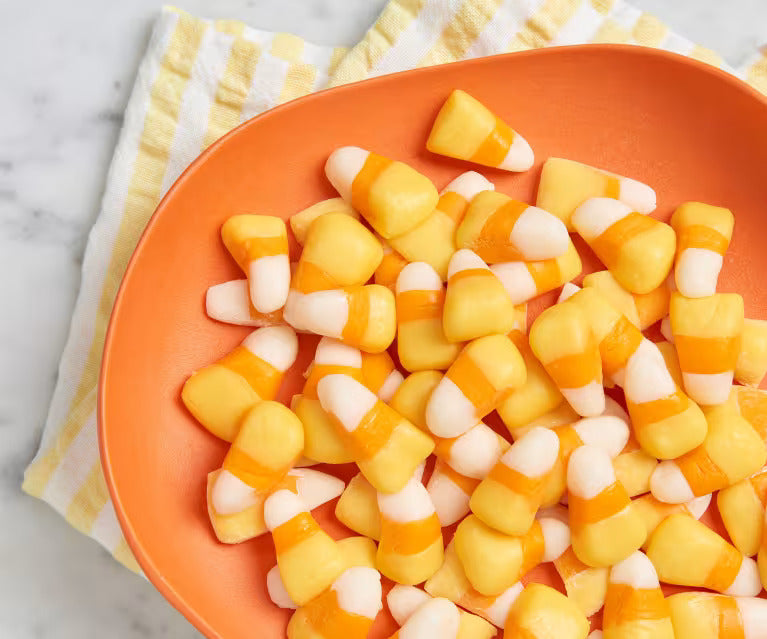
Candy Corn: All You Need to Know About the Halloween Soul Candy
Halloween: A time of eerie costumes, spine-tingling tales, and, of course, the inception of sugar comas. At the heart of every Halloween treat basket lies the quintessential candy corn—one of the most polarizing confections with a history as vibrant as its vibrant yellow, orange, and white hues. But what makes candy corn the "soul candy" of Halloween?
Let's embark on a sugar-coated journey through the rich tapestry of candy corn, from its humble origins to its current festive pedestal.
Candy Corn’s History
Candy corn is the beguiling creation of George Renninger, the creative mind who, in the late 1880s, yielded the vibrant "chicken feed" concoction at the Wunderle Candy Company. From its unusual agricultural-themed roots, candy corn marched its way into the annals of Halloween fame with its glistening tri-color charm. But how did it achieve hallowed status from such agrarian representations?
The critical relationship tying candy corn to Halloween rests upon its historical marketing evolution. Originally marketed as "Chicken Feed," candy corn shifted from agricultural symbolism to a hallmark harvest ringed in autumnal colors thanks to Jelly Belly's keen marketing efforts in the late 19th century.
In this consolidated guide, we will dissect the colorful story of candy corn, analyzing its attributes, production process, and consumer trends. Understanding these connections will illuminate why candy corn endures as a topic of continuous intrigue—be it adoration, loathing, or indifference.
The Sweet Origins of Candy Corn
To understand candy corn's historical arc, one must rewind to the vibrantly industrious 1800s when George Renninger's genius at Wunderle Candy Company bore the first kernels of candy corn. UGA Food Technology Professor William Kerr speaks to the epochal creation: “In an age when sweet treats were opening the doors to industrialization’s possibilities, candy corn blended agrarian tribute and confectionary delight.”
By the 1950s, thanks to adaptable market positioning and autumn-colored indulgence, candy corn secured its place within Halloween festivities. Where previously an agricultural novelty, candy corn had transitioned into an evocative fixture in American cultural tradition.
The Secret Ingredients: What Candy Corn is Made of
Candy corn is not merely a delightful aesthetic spectacle of color but a complex confectionery odyssey composed of select ingredients. This buttercream delicacy marries together sugar, butter, honey, and a tinge of vanilla—a compilation lending to its firm marshmallow-like texture that dances between soft and hard candy strata.
The buttery essence remains overshadowed behind the vibrancy of its colors, reflecting a kaleidoscope of sugars whipped into a delicate slurry. Vanilla and sugars comprise this concoction, which is tinted vivid hues before being ladled into molds.
The Art of Candy Corn Production
Modern confectioners now rely on precision machinery, such as the Mogul machine, to achieve the remarkable feat of producing 4.3 billion candy corn pieces annually. According to a fascinating behind-the-scenes glimpse, these machines pour candy corn pieces at astonishing velocities, producing 25 boards of candy-filled molds per minute.
The production process has evolved from artisanal hand-pouring to technological marvels combining sugar, corn syrup, dextrose, and honey—lending the famous candy its distinguished flavor and steadfast texture.
Love It or Hate It: Consumer Trends and Halloween Traditions
Candy corn's polarizing taste results in it being perhaps one of the most debated of Halloween treats. A study by Qlarant underscores the divided sentiment: 34% of people express distaste, while 22% ardently adore it, and the remaining 44% remain unfazed. Despite the division, sales figures reflect robust consumption, with Americans purchasing $59.3 million worth of candy corn annually.
One might ponder how such a dichotomous treat continues to thrive. The answer lies within Halloween traditions—all credit due to its candy-color mimicry of the season’s robust harvest hues.
Candy corn's confectionary tale is far-reaching, influencing broader markets and annual nostalgia. Its consistent autumnal revival suggests more than mere novelty artifice but rather signals continuity within cultural heritage.
Such elements suggest an ongoing cultural dialogue, painting candy corn as an autumnal fixture with multilayered meaning and import.
Candy Corn in Culinary Creations: Recipe Ideas and Innovations
Candy corn expands beyond its conventional use, finding itself at the starry core of innovative recipes—from candy corn fudge to delightful cookies. Its distinctive taste and texture chart an inviting culinary border for further experimental confectionery endeavors.
Here are a few simple yet intriguing recipes to try:
- Candy Corn Fudge: Combining creamy candy corn with white chocolate, this fudge melts into a festive delight.
- Candy Corn Cookies: Sweet takes on classic cookie dough, with candy corn buttons adorning their tops.
- Candy Corn Bark: A splendid fusion of flavors and textures with a mix of chocolates and candy corn pieces.
Each recipe embodies the playful spirit of Halloween’s confectionery heart, bringing a touch of fun to festive gatherings.
A Conclusion
Candy corn stands as an undeniable icon of Halloween's sweet symphony, from its birth as agricultural candy to its automatic association with communal autumn cheer. Its resilience through the decades speaks to its entrenched seasonal symbolism and delightful indulgences that echo generations of nostalgic October evenings.
Professor William Kerr aptly surmises, "Candy corn is much more than a candy; it’s a physical manifestation of our shared past and sugary celebrations."
Candy corn's journey is a testament to the fusion of tradition, nostalgia, and perpetual innovation, ensuring that every Halloween will echo with the munch of this beloved "soul candy."
